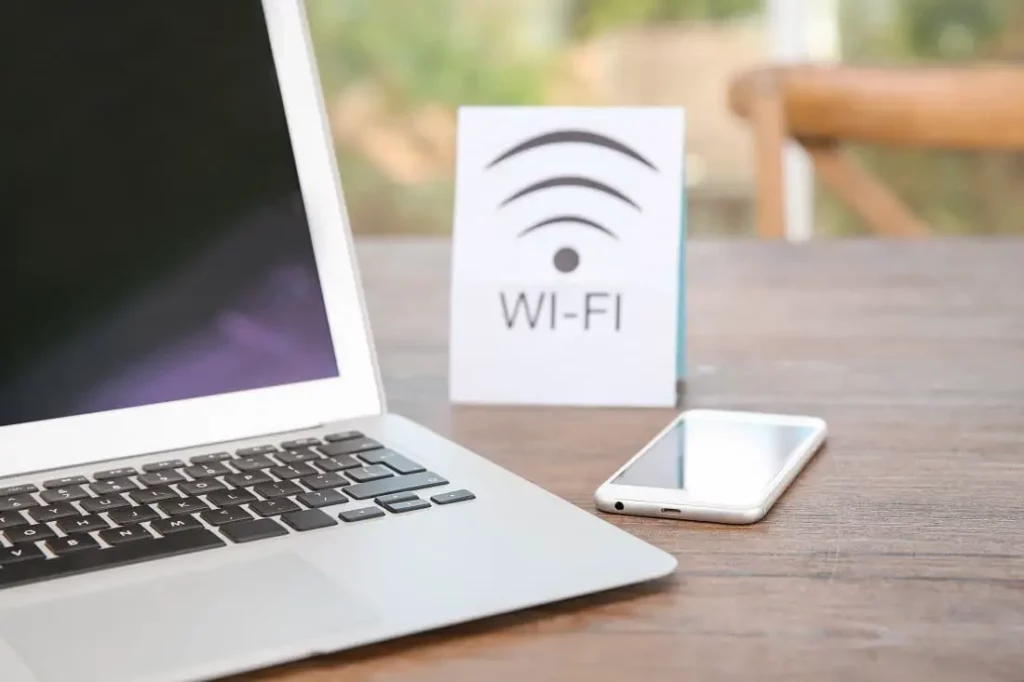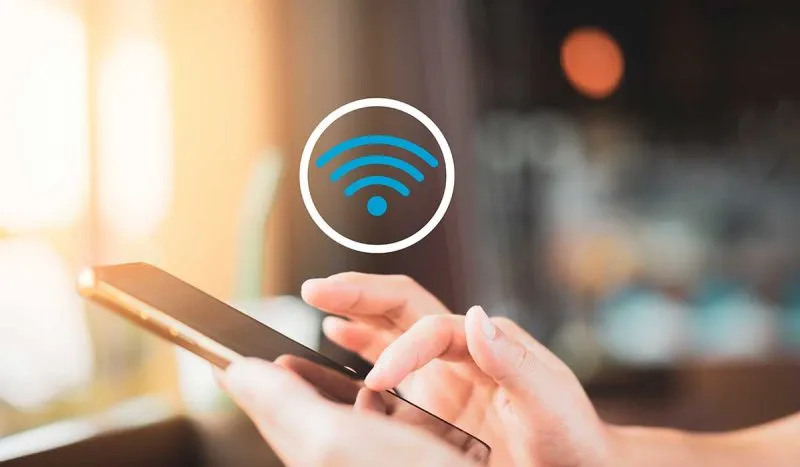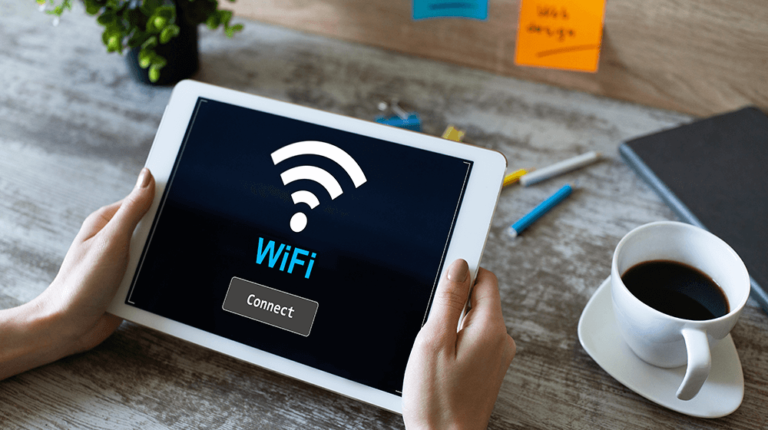Have you ever been in a cozy coffee shop, sipping your drink, and checking Twitter on your laptop? It’s a common scene these days, thanks to public Wi-Fi. But one day, a thought crossed my mind: “Can the coffee shop owner see what I’m looking at on Twitter?” It’s a valid concern in a world where privacy matters.
In most cases, your Wi-Fi owner cannot directly see the specific tweets or searches you perform on Twitter. Twitter uses encryption to protect your data from prying eyes. However, they can see that you are using Twitter, the amount of data you are consuming, and the websites you visit, including Twitter. Your individual tweets and searches remain private from your Wi-Fi owner.
How Does Wi-Fi Work?
Wi-Fi, or Wireless Fidelity, has revolutionized the way we access the internet and connect our devices. At the heart of Wi-Fi is wireless communication through radio waves. These radio waves are a type of electromagnetic radiation, much like visible light or X-rays. Wi-Fi devices, such as your laptop or smartphone, use these radio waves to send and receive data wirelessly.
Then, Imagine a wireless router as the conductor of an orchestra. It’s the central device that manages your Wi-Fi network. Routers connect to the internet through your Internet Service Provider (ISP) and then wirelessly communicate with your devices. They emit radio waves, creating an invisible network that your devices can tap into.
Moreover, Every Wi-Fi network has a name, known as a Service Set Identifier (SSID). When you search for available networks on your device, you’ll see a list of these SSIDs, including those from nearby routers. You select the network you want to join, often by entering a password or passphrase for security.
Additionally, Security is crucial in Wi-Fi networks. To join a network, you need the correct SSID and, typically, a password. This authentication ensures that only authorized users can access the network. Moreover, data transmitted between your device and the router can be encrypted, making it challenging for unauthorized parties to intercept and understand.
However, Wi-Fi signals have a limited range. They are strongest when you’re close to the router and weaken as you move farther away. Obstacles like walls and furniture can also affect signal strength and coverage. This is why you may experience slower internet speeds in some parts of your home.
A single Wi-Fi network can handle multiple devices simultaneously. This feature enables smartphones, laptops, tablets, smart TVs, and an array of other gadgets to connect to the internet and communicate with one another without physical cables.
The Nature of Twitter Searches

First, Twitter searches serve as a gateway to exploration in the vast realm of social media. When users type keywords or phrases into Twitter’s search bar, they enter on a journey to discover specific information, connect with peers, or keep abreast of trending topics. Twitter’s real-time nature makes it an ideal platform for obtaining instant updates, news, and engaging in lively discussions.
Then, The beauty of Twitter searches lies in their diversity. Users search for an extensive range of interests and inquiries. Whether it’s for breaking news, the latest developments in pop culture, do-it-yourself (DIY) guidance, or niche hobbies like birdwatching, Twitter accommodates a broad spectrum of user interests. This diversity highlights Twitter’s versatility as an information hub.
Moreover, Twitter places a significant emphasis on user privacy. Unless a user’s Twitter account is set to private, their tweets are generally visible to the public. However, certain aspects, such as direct messages (DMs) and specific account details, remain private and inaccessible to others. Twitter implements safeguards to protect user data, ensuring a secure online environment.
Furthermore, the role of hashtags (#) in Twitter searches cannot be overstated. Users employ hashtags to categorize their tweets, making them easily discoverable by a broader audience. For instance, if you have a keen interest in gardening, searching for #gardening will unveil a wealth of gardening-related tweets from various Twitter users. Hashtags facilitate the organization and accessibility of tweets on specific topics.
In addition, Twitter’s trending topics feature adds an extra layer of dynamism to Twitter searches. This feature compiles a constantly changing list of keywords and hashtags that are currently popular across the platform. Users can explore trending topics to stay informed about the latest news, viral trends, and global discussions, making Twitter a real-time hub of information and social engagement.
Recognizing the multifaceted nature of Twitter searches is crucial as we investigate whether Wi-Fi owners might have visibility into these searches. While Twitter encourages open exploration and diverse interactions, questions remain about the extent of privacy and whether those overseeing the Wi-Fi network can monitor what users search for on Twitter.
Best Practices for Twitter Privacy
Protecting your privacy on Twitter is essential in today’s digital landscape. With countless users and a vast amount of information shared daily, it’s important to implement best practices to safeguard your personal information and maintain a secure online presence.
Firstly, initiate the process by thoroughly examining and adjusting your Twitter privacy settings. You can access these settings conveniently by clicking on your profile picture and navigating to the “Settings and Privacy” section. Here, you’ll find various options to control who can see your tweets, send you direct messages, and more.
Secondly, fortify your Twitter account’s defenses by employing a robust and unique password. Avoid easily guessable combinations, and contemplate enabling two-factor authentication (2FA). With 2FA activated, you’ll need to enter a code sent to your mobile device to successfully log in, adding an additional layer of security.
Furthermore, exercise prudence when it comes to sharing personal information on Twitter. It’s advisable to refrain from posting sensitive details such as your home address, phone number, or financial information in your tweets or on your profile. Exercise caution regarding the information you divulge concerning your location and daily activities.
Another important aspect of safeguarding your privacy on Twitter is the thoughtful consideration of your tweets before posting them. Tweets are inherently public and once published, they become part of the public domain. Hence, avoid sharing confidential information, and exercise caution when broaching sensitive subjects or engaging in controversial discussions.
Managing your followers is a prudent practice too. Periodically review your list of followers, and if you encounter accounts that exhibit suspicious behavior or engage in harassment, you have the option to either block or mute them. Blocking ensures that the account cannot interact with you in any way while muting conceals their notifications.
Vigilance against phishing attempts is also crucial. Stay alert to direct messages or tweets containing suspicious links, particularly those soliciting your login credentials. Remember that Twitter will never ask you to share your password via email or direct message.
Familiarize yourself with Twitter’s privacy and security policies, as an understanding of the platform’s regulations and guidelines is essential for making informed decisions about your online activity and interactions. Lastly, regularly update your Twitter app or web browser to ensure you benefit from the latest security patches and enhancements, protecting your account from potential vulnerabilities.
How to Secure Your Twitter Account
Securing your Twitter account is of utmost importance in the digital age. With the ever-present potential for cyber threats and privacy breaches, taking proactive steps to protect your account is essential.
Enable Two-Factor Authentication (2FA): One of the most effective ways to fortify your Twitter security is by enabling two-factor authentication. This adds an extra layer of protection by requiring you to enter a unique code sent to your mobile device when logging in.
Use a Strong, Unique Password: Create a strong and unique password for your Twitter account. Avoid using easily guessable information such as birthdays or common words. Consider using a combination of uppercase and lowercase letters, numbers, and special characters.
Regularly Update Your Password: Change your password periodically. Doing so helps minimize the risk of unauthorized access, especially if you suspect your password may have been compromised.
Review and Revoke Third-Party App Access: Periodically review the list of third-party applications that have access to your Twitter account. Some apps may request extensive permissions. Ensure that you trust these apps and revoke access to any that you no longer use or trust.
Be Wary of Phishing Attempts: Beware of phishing attempts, which often involve deceptive messages or links that lead to fraudulent websites. Never share your login credentials in response to unsolicited requests, and report any suspicious activity to Twitter.
Monitor Your Account Activity: Regularly review your account activity for any unusual or unauthorized actions. Twitter provides tools for tracking login history and active sessions, allowing you to spot any suspicious activity.
Review Email Notifications: Configure your Twitter account to send you email notifications for account changes, such as password resets or email address updates. This provides an additional layer of awareness in case any unauthorized changes occur.
Educate Yourself About Security: Stay informed about current security threats and best practices. Twitter’s Help Center provides valuable resources on account security, and following reputable cybersecurity news sources can help you stay up-to-date.
Verify Email Address and Phone Number: Link a valid email address and phone number to your Twitter account. These contact points can be used for account recovery and verification.
Use a Secure Network: When logging into Twitter, ensure you’re using a secure network, especially when entering your login credentials. Avoid public Wi-Fi networks, which may pose security risks.
By following these steps, you can significantly enhance the security of your Twitter account, protecting your personal information and ensuring a safer and more enjoyable Twitter experience.
Using a VPN
Imagine a VPN as your online guardian angel, especially when you’re navigating the Twitterverse. Here’s how it works: when you connect to a VPN, it creates a secure and encrypted tunnel between your device and a server in a location of your choice. This clever technology offers several key benefits when you’re using Twitter.
Firstly, it provides privacy and anonymity; with a VPN, your real IP address is hidden, making it difficult for anyone to trace your Twitter activities back to you. Additionally, it allows you to bypass geo-restrictions, granting you access to Twitter even in regions where it might be blocked.
Moreover, it ensures security on public Wi-Fi networks, safeguarding your Twitter activities from potential threats. Furthermore, a VPN evades ISP tracking, preventing your Internet Service Provider from monitoring your specific Twitter interactions. On top of that, it enhances overall security by employing strong encryption protocols. Furthermore, it can thwart ISP throttling, allowing you to maintain smooth Twitter use even when your connection is being slowed down.
Lastly, VPNs can be used on mobile devices, extending the same level of privacy and security to your Twitter experience on smartphones and tablets. In essence, a VPN acts as your trusty sidekick when you’re on Twitter, safeguarding your privacy, ensuring your online freedom, and adding an extra layer of security. It’s like having a secret ally that helps you enjoy Twitter without worrying about who might be watching.
Legal and Ethical Considerations

Firstly, there are legal boundaries that safeguard user privacy in the digital sphere. Various laws and regulations, such as data protection laws and privacy acts, exist to protect individuals from unauthorized access to their online activities. For instance, in the United States, the Electronic Communications Privacy Act (ECPA) regulates the interception of electronic communications, including online searches. However, the application of these laws can vary by jurisdiction and may depend on the specifics of the situation.
Moreover, social media platforms like Twitter have their own Terms of Service (ToS) agreements, which users must adhere to when using the platform. These ToS agreements outline the rules and expectations for using the service and often include clauses related to user privacy and data protection. Violating these terms can result in the suspension or termination of a user’s account.
Furthermore, ethical considerations come into play when discussing online privacy. Ethical behavior involves respecting the rights and privacy of others in the digital realm. Ethical Wi-Fi owners and network administrators are expected to use their access responsibly and refrain from intruding on users’ private activities. Transparency and informed consent should be upheld when monitoring network traffic.
Additionally, social norms play a role in shaping ethical behavior online. In the digital age, respecting the privacy of online interactions has become a widely accepted social norm. Many individuals and organizations value the importance of online privacy and consider it a fundamental aspect of responsible internet usage.
However, it’s worth noting that the digital landscape can sometimes have gray areas. Determining what is legal and ethical in every situation may not always be straightforward. The interpretation of laws and ethical principles can vary, leading to debates and discussions about the boundaries of online privacy.
FAQ
Can WiFi see what you search on Twitter?
No, WiFi alone cannot see what you search on Twitter as it only provides the means for internet access.
Can ISP see Twitter app activity?
Yes, your Internet Service Provider (ISP) can potentially see your Twitter app activity unless you’re using encryption methods like HTTPS.
Can WiFi owner see what I search on Twitter?
If the WiFi owner is technically proficient and monitoring network traffic, they might be able to see what you search on Twitter if it’s not encrypted.
Can WiFi see what I do on Twitter?
WiFi itself doesn’t have the capability to see what you do on Twitter; it merely facilitates the connection between your device and the internet.
Can my ISP see what I do on Twitter?
Yes, your Internet Service Provider (ISP) can potentially see what you do on Twitter unless you’re using secure connections like HTTPS.
Can the WiFi owner see what I search on Twitter?
If the WiFi owner has the technical capability to intercept and monitor network traffic, they might be able to see what you search on Twitter if it’s not encrypted.
Do Twitter searches show up on WiFi?
Twitter searches themselves don’t “show up” on WiFi. What’s transmitted over WiFi can be intercepted if it’s not encrypted, potentially revealing your Twitter searches.
Can WiFi see what you do on Twitter?
WiFi doesn’t have the inherent ability to see what you do on Twitter; it’s the network traffic passing through the WiFi connection that could potentially be intercepted.
Can my internet provider see what I search on Twitter?
Yes, your internet provider can potentially see what you search on Twitter unless you’re using secure connections like HTTPS.
Final words
All things considered, our exploration into whether Wi-Fi owners can see Twitter searches highlights the importance of balancing online freedom and privacy. While Twitter searches offer a world of information and engagement, it’s crucial to respect user privacy. Legal safeguards and ethical principles play a vital role in protecting our online activities. Navigating the digital landscape requires responsible usage and an understanding of the boundaries that protect our privacy. Whether in a cafe with public Wi-Fi or any network, mindful and respectful online behavior is key. Stay connected, explore, but always safeguard your digital privacy.

